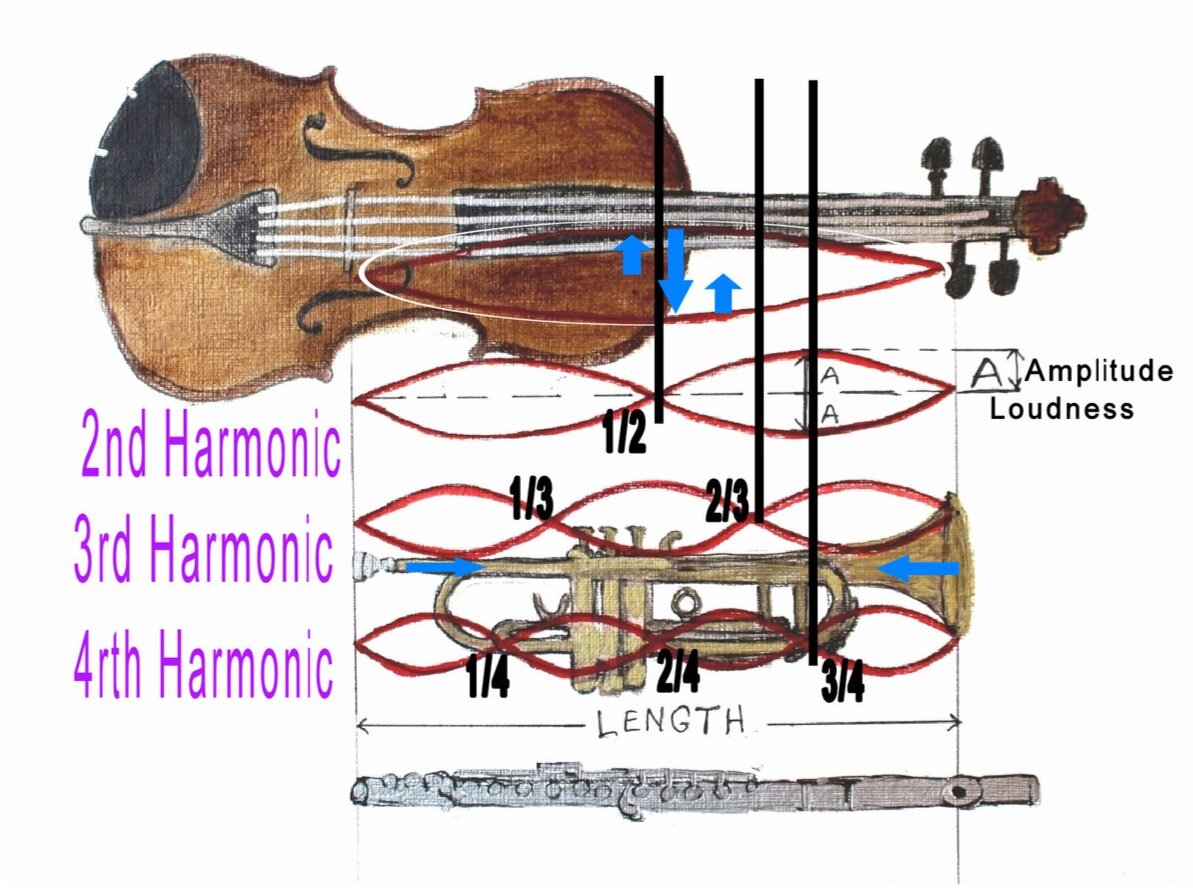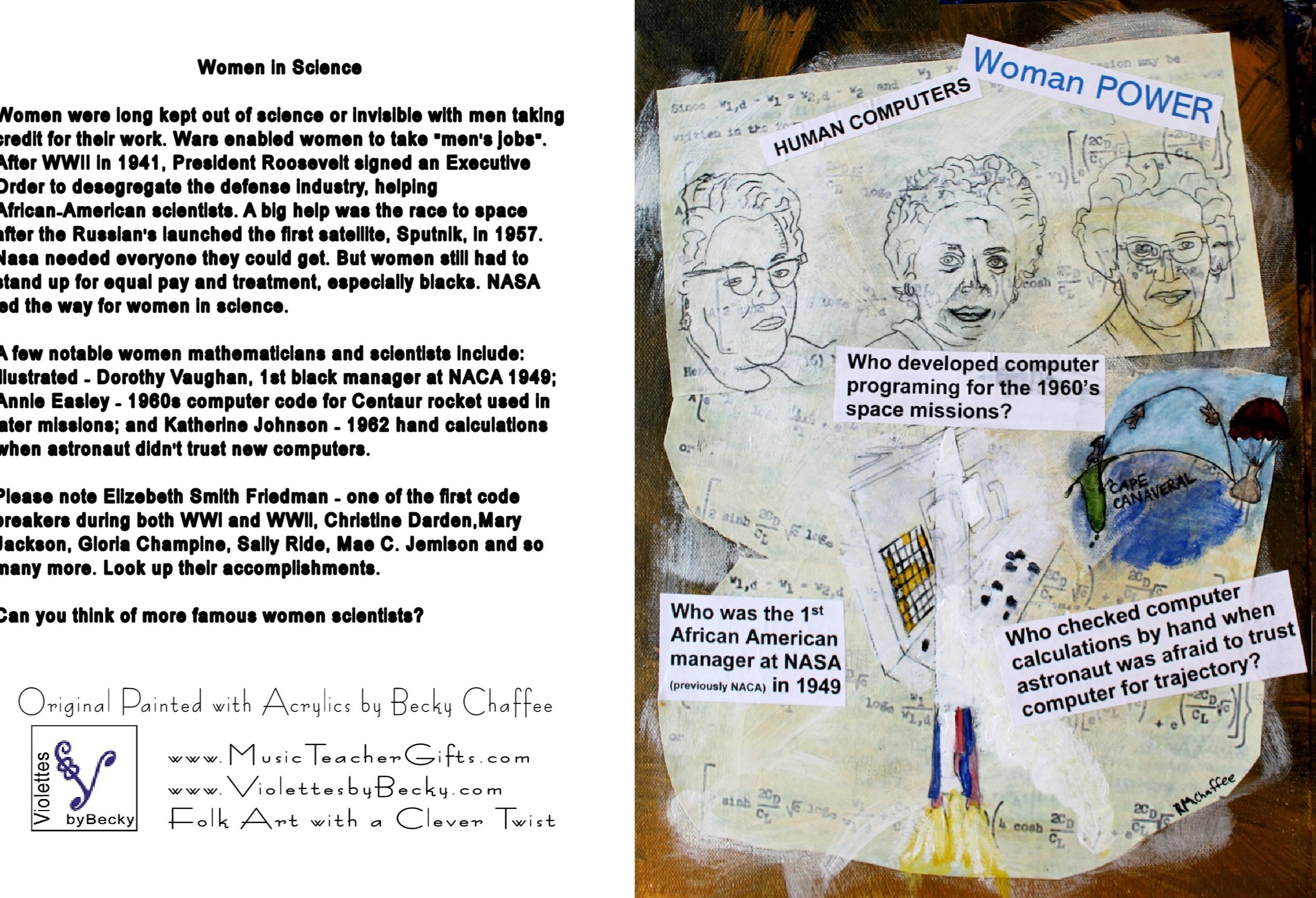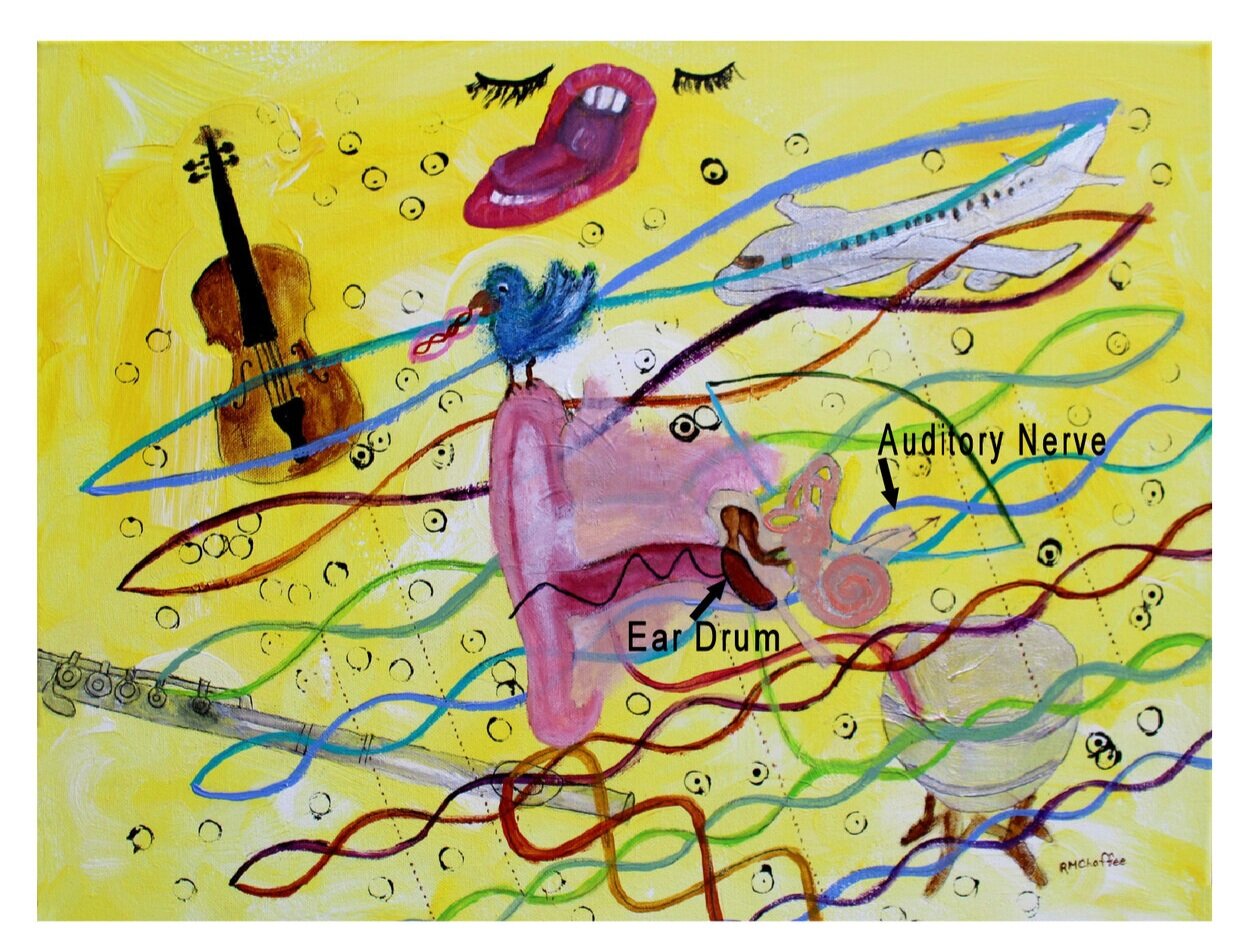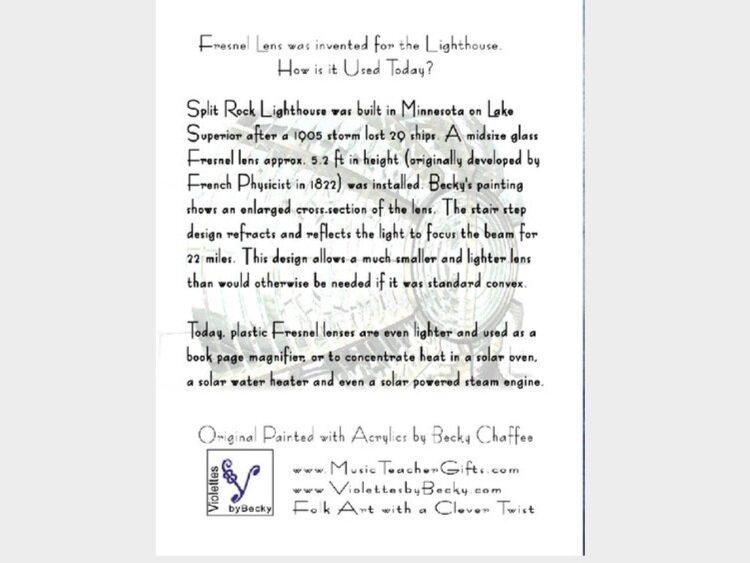 Image 1 of
Image 1 of


LS8.0 Uses of Harmonics - Lunchbox Science Note Cards
The Back of the Card says:
LS8.0 Uses of Harmonics
Harmonics refers to repetitive sinusoidal waves. A complete wave travels a full "back and forth" cycle. It is useful for electrical, bridge, ultrasonic and radio design. In music, the first harmonic is obtained by plucking an open string or blowing a wind or brass instrument. On a stringed instrument, pluck to vibrate the open string, then lightly touch the point exactly half way across the string to hear the second harmonic, a tone an octave above. Do the same on a point 1/3 or 2/3 the string length to hear another 5th higher, 3rd harmonic. The 4rth harmonic is 2 octaves above the string. For a wind or brass instrument, overblowing will sound the harmonics.
For a string, the waves are transverse (the direction the string travels). For winds/brass, the wave is longitudinal, along the length of the instrument. (This is harder to understand).
Can you figure out how to sound harmonics on the piano?
How do you think science and engineering fields make use of Harmonic waves?
Each card comes as individual or set of 6 of same or variety pack of Eight 4 by 6 Note Cards with envelopes.
The Back of the Card says:
LS8.0 Uses of Harmonics
Harmonics refers to repetitive sinusoidal waves. A complete wave travels a full "back and forth" cycle. It is useful for electrical, bridge, ultrasonic and radio design. In music, the first harmonic is obtained by plucking an open string or blowing a wind or brass instrument. On a stringed instrument, pluck to vibrate the open string, then lightly touch the point exactly half way across the string to hear the second harmonic, a tone an octave above. Do the same on a point 1/3 or 2/3 the string length to hear another 5th higher, 3rd harmonic. The 4rth harmonic is 2 octaves above the string. For a wind or brass instrument, overblowing will sound the harmonics.
For a string, the waves are transverse (the direction the string travels). For winds/brass, the wave is longitudinal, along the length of the instrument. (This is harder to understand).
Can you figure out how to sound harmonics on the piano?
How do you think science and engineering fields make use of Harmonic waves?
Each card comes as individual or set of 6 of same or variety pack of Eight 4 by 6 Note Cards with envelopes.
The Back of the Card says:
LS8.0 Uses of Harmonics
Harmonics refers to repetitive sinusoidal waves. A complete wave travels a full "back and forth" cycle. It is useful for electrical, bridge, ultrasonic and radio design. In music, the first harmonic is obtained by plucking an open string or blowing a wind or brass instrument. On a stringed instrument, pluck to vibrate the open string, then lightly touch the point exactly half way across the string to hear the second harmonic, a tone an octave above. Do the same on a point 1/3 or 2/3 the string length to hear another 5th higher, 3rd harmonic. The 4rth harmonic is 2 octaves above the string. For a wind or brass instrument, overblowing will sound the harmonics.
For a string, the waves are transverse (the direction the string travels). For winds/brass, the wave is longitudinal, along the length of the instrument. (This is harder to understand).
Can you figure out how to sound harmonics on the piano?
How do you think science and engineering fields make use of Harmonic waves?
Each card comes as individual or set of 6 of same or variety pack of Eight 4 by 6 Note Cards with envelopes.













